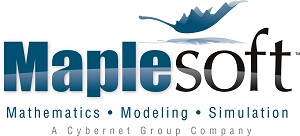A Modern Electric Bus Fleet: Improving Public Transit with System-Level Modeling
The implementation of new technologies into existing operations can create a paradoxical situation for organizations reliant upon efficient operations.
For the National Research Council of Canada
(NRC), this paradox is of particular concern when attempting to integrate new
vehicle propulsion technologies in the transit industry. With concerns
for carbon emissions becoming a critical issue, it is increasingly important to
transport more commuters with public transit while simultaneously decreasing
the environmental impact of transit operations. With an initial focus on the
electrification of public transit, the NRC tasked Maplesoft with developing a
comprehensive, physics-based model of a battery-electric bus to build upon
their existing capabilities. The NRC now
has an improved, highly configurable model that can better simulate the integration
of battery-electric buses into ongoing operations. The model plays a central role in the Fleet Forward Methodology;
a methodology developed and used by the NRC to de-risk the deployment of
battery-electric buses across Canadian municipalities. By leveraging Maplesoft’s
expertise, the NRC team was able to produce a highly sophisticated model using
leading edge technology that will help inform operators, equipment
manufacturers and regulators, while at the same time improve public transit as
a whole.
As cities across the world continue to increase in both population and density, public transportation plays a critical role in creating liveable cities by reducing the total number of vehicles operating in urban centers. An effective transit system also has the potential to drastically reduce carbon emissions generated from the transportation of people, resulting in improved urban air quality and sustaining a healthy environment for generations to come.
In order to realize the potential environmental and societal benefits of improved transit, the National Research Council of Canada (NRC) is determining how to optimize existing transit operations through the implementation of new technologies. Part of their existing research focuses on the analysis of fleet operations using model-driven approaches to transit technology planning. By using physics-based modeling as the core of their analysis methodology, the NRC is able to provide more accurate forecasts of the system-level implications of technology implementations. To improve the flexibility and configurability of their existing modeling tools, the NRC looked to migrate their modeling platform to the modeling and simulations tools developed by Maplesoft.
As an initial step towards capability migration, the NRC’s modeling team worked with Maplesoft’s Engineering Solutions team to create a high-fidelity model of the battery-electric bus dynamics, taking into consideration a wide variety of factors that impact operational decisions. These factors are all necessary to address a range of concerns from transit operators when moving forward with a new type of transit system. For example, transit operators need to know the uptime for an electric bus in comparison to a diesel-powered bus to plan schedules and streamline operations. This requires a detailed understanding of both the charging of bus batteries and determining realistic energy consumption as the bus completes a specific transit route. The operators are also interested in other operating considerations of battery-electric buses such as carbon emission savings, equivalent diesel fuel savings, and the cost of charging the bus during typical usage. The system-level model developed by NRC and Maplesoft helps provide information to address these questions early in the vehicle procurement process.
The battery-electric bus model is composed of a variety of subsystems that are integrated into one unified system for simulation and design exploration. This model was created using MapleSim, Maplesoft’s tool for system-level modeling and simulation. The model incorporates interactions from multiple domains of the electric bus system, such as the vehicle body dynamics, electric motor performance, detailed battery models, and passenger loading details as the bus model travels a specific route (Figure 1). This model was created using both the standard MapleSim physics-based components and customized components, which provided the ability to modify the design to the exact bus and transit specifications. With the completed model, the NRC is able to simulate the entire vehicle system, providing system performance information at any point that the engineer wishes to examine.

Figure 1: The model structure includes input from a variety of sources, and captures the dynamics of a range of components in a typical electric bus transit environment.
Published by Maplesoft, Inc. on Dec 13, 2017




